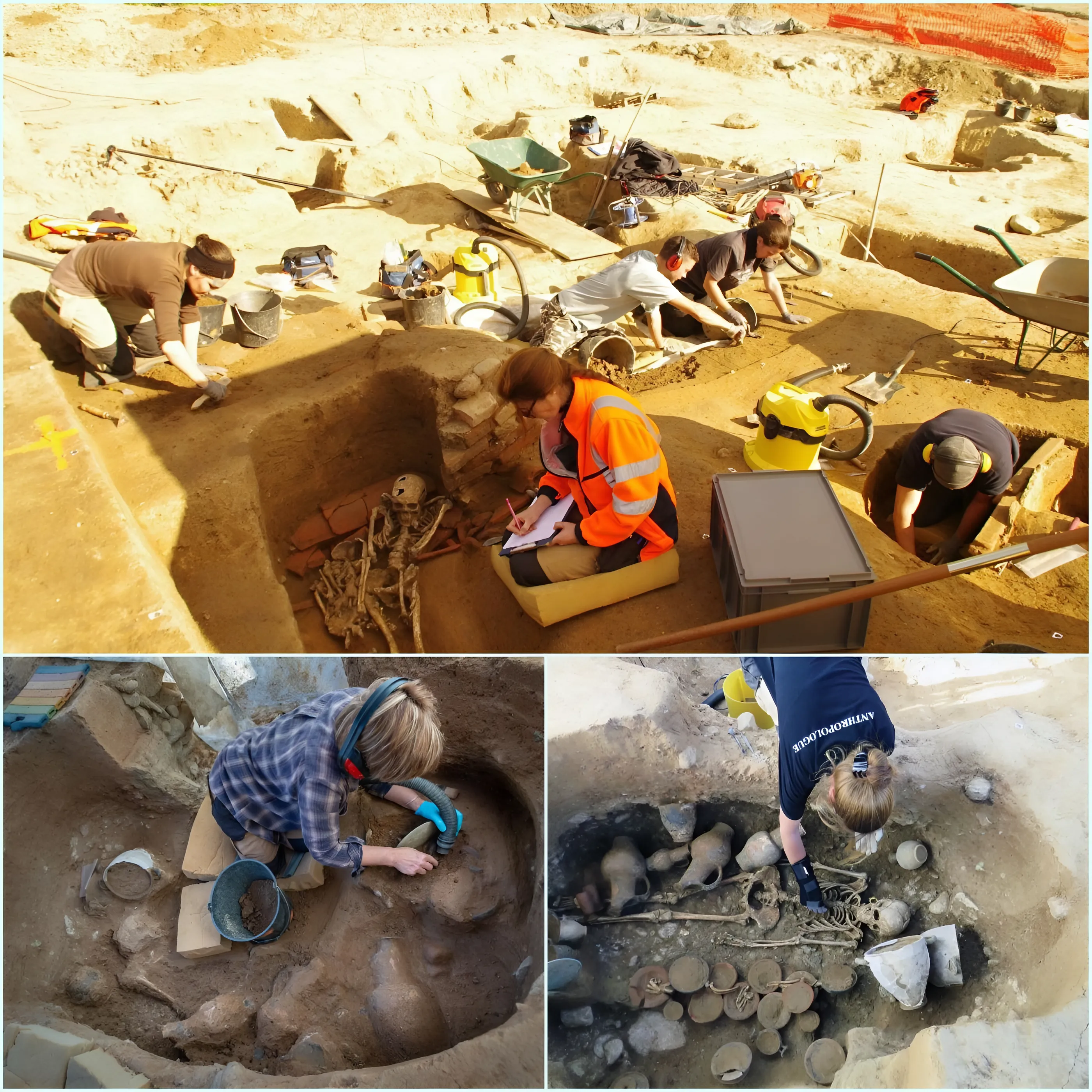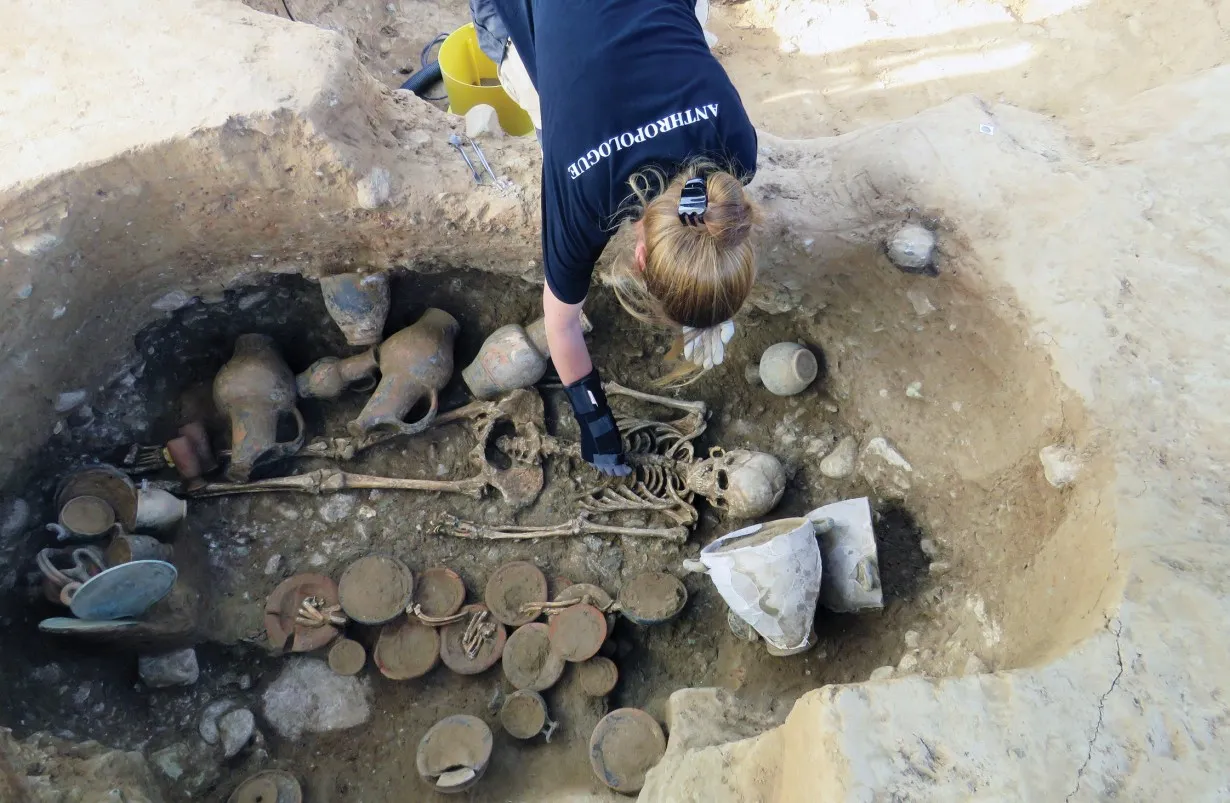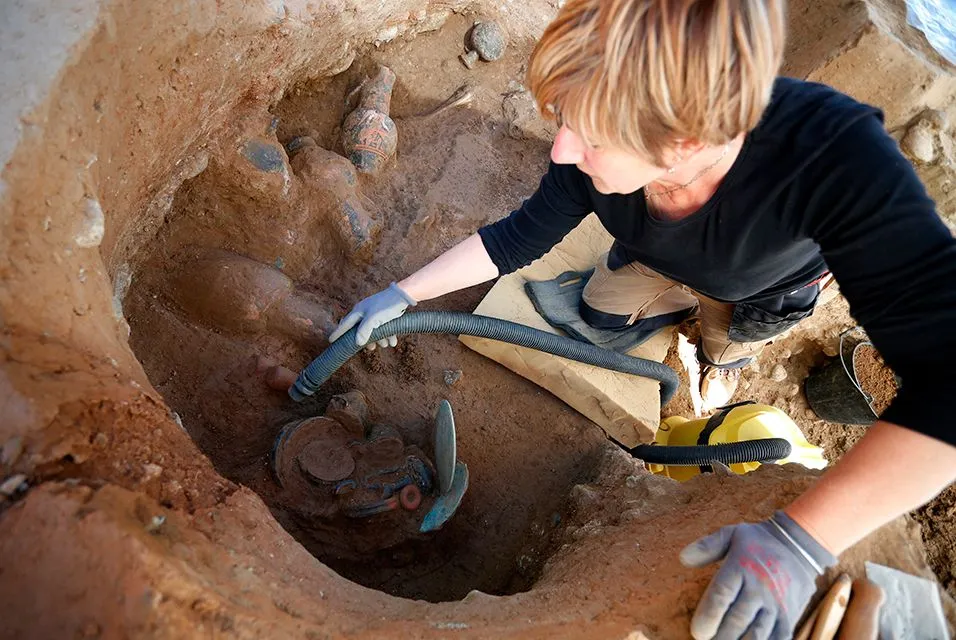
The discovery of an Etruscan tomb within an extensive necropolis near the ancient city of Aleria in Corsica is a significant archaeological find. Spread over approximately one hectare and surrounded by pathways, this necropolis showcases remarkably well-preserved ancient burials despite the typically acidic soil of Corsica, which often erodes bones. The site features various burial practices including inhumations in pits, masonry coffins, studded wood coffins, and funeral pyres, reflecting diverse cultural traditions.

Among these burials, archaeologists from Inrap have recently unveiled an Etruscan tomb in a hypogeum, an underground chamber traditionally reserved for high-status individuals. Accessed by a flight of stairs leading to a six-meter-long corridor, this burial chamber extends more than two meters below ground and remains intact, sealed with a mixture of clay, potsherds, rocks, and charcoal. It is believed that this seal was opened and resealed multiple times to deposit new grave goods and possibly additional deceased individuals.

Excavations have already yielded several artifacts from this tomb, including three black varnished goblets and part of a handle from a probable oenochoé. Two skyphoi, large-handled goblets, were discovered near the skull of an individual. These finds suggest a burial dating back to the 4th century BC, though ongoing studies will provide further insights into this intriguing discovery.
Aleria holds a prominent place in the ancient history of Corsica and the western Mediterranean. Known for its Roman city with a forum and amphitheater, and the notable Etruscan Casabianda necropolis, Aleria continues to reveal its historical richness through ongoing archaeological research programs involving numerous institutions and researchers.
The presence of Etruscan influences in Corsica, particularly along its eastern coast, is well-documented from around 500 BC until the Roman conquest in 259 BC. Aleria’s archaeological sites provide crucial evidence of these historical connections, emphasizing its role as a hub of maritime trade routes between Liguria, southern France, and beyond.





